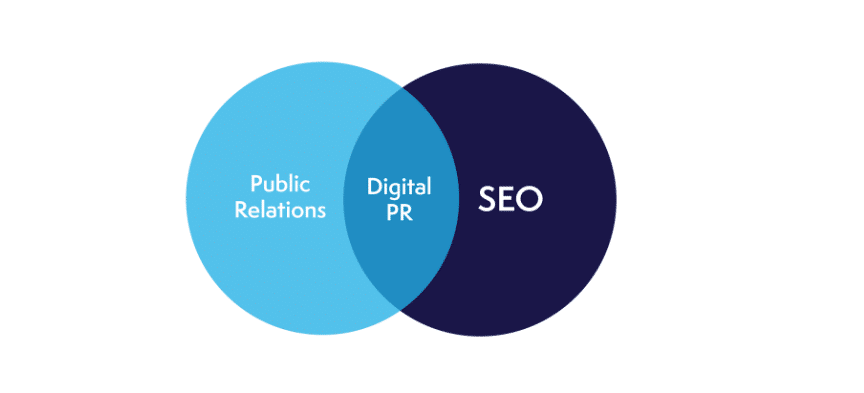What Is Digital Public Relations (Digital PR)?
Like just about everything else these days, the future of public relations is digital.
Not only has digital technology changed how organizations communicate internally, it has changed how they communicate with each other and the public. Gone are the days when public relations simply involved churning out press releases and responding to media inquiries.
Digital public relations (or digital PR) as practiced today combines these traditional PR tactics with content marketing, social media marketing, and search engine optimization (SEO). A robust digital PR strategy creates conversations that speak directly to a target audience online, showcases and spotlights thought leadership, and positions brands as authorities in their space.
Two of the most common methods higher education institutions use to promote their brand are expert commentary and bylines by faculty. At Archer Education, we help our partner institutions craft digital PR strategies that generate positive media exposure, amplify SEO value, and establish institutional credibility by connecting faculty with high-level media outlets.

Digital Public Relations vs. Traditional Public Relations
In the days before the World Wide Web, concepts like SEO and social media strategy didn’t exist. Today, they’re building blocks of an informed digital PR strategy. While generating press releases, conducting media outreach, and responding to media inquiries and the occasional crisis are still necessary, digital PR strategies in higher ed focus on building a school’s brand by harnessing and amplifying faculty expertise to connect with the media and target audiences.
At Archer, we do this by first building personal relationships with our partner institutions’ faculty and stakeholders so that we understand the unique value and perspectives their academic experts can bring to national conversations. Next, we focus on getting faculty member names and institutional affiliations out to audiences beyond academia by pitching ideas for faculty-generated content to traditional and digital media outlets and platforms.
By keeping up with the news and trends in society and education, Archer’s digital PR specialists are always looking for opportunities to get faculty members in front of the public in traditional and novel ways — like creating TikTok videos, amassing large Twitter followings, or publishing content on LinkedIn.
Digital PR Strategy Tactics
Your institution’s PR team can implement two tried and true tactics to generate positive media exposure, amplify SEO value, and raise the profile of your faculty and brand: expert commentary and bylines.
Expert Commentary
Expert commentary refers to when an expert is quoted in a larger story that was written by a writer or reporter. Since two of the primary goals of digital PR are to build domain authority and to generate backlinks, this is an ideal tactic.
Expert commentary can be contributed to news articles, case studies, roundup articles, and much more. By taking the time to provide expert commentary, schools increase the authority of their brand and often gain access to previously untapped audiences.
Bylines
Bylines are contributed articles (like guest posts or op-eds) that are published under the faculty member’s name. In the case of a college or university, for example, a professor or thought leader may write a byline for a website focused on helping students choose the right major.
Generally, bylines are unique opinion pieces centered on a trending topic, such as navigating the pivot to online learning during the pandemic. At Archer, we offer faculty members the option to write the article themselves or recruit a member of our expert team of former journalists to ghostwrite it for them.
What Are the Benefits of Digital Public Relations?
Digital PR has emerged as a powerful tool for generating exposure and establishing credibility online. Forging strong relationships with journalists, editors, bloggers, and other producers of digital content can help a university to amplify its story and reach larger, coveted audiences.
A successful digital PR strategy crafted by Archer offers the following benefits:
- Expands brand awareness
- Promotes thought leadership
- Drives organic traffic
- Builds high-quality backlinks to a target domain
Here’s a closer look at each benefit.
Brand Awareness
One of the most significant benefits of a robust digital PR strategy is increased brand awareness. The simple truth about brand awareness is that no business or organization can succeed without it. People don’t buy from or invest in brands they don’t know. Nor do students apply to schools or programs they’ve never heard of.
By pushing quality content to a wide audience, digital PR captures eyeballs and increases your institution’s name recognition and your faculty’s reputation as thought leaders.

Thought Leadership
Thought leaders are individuals who are experts in their field and who create and share content for educational and motivational purposes. When a faculty member publishes an article under their byline or contributes expert commentary to a piece written by a reporter, it helps establish them (and your institution) as an expert in a particular field. The individuals who are frequently published or interviewed by the media are those most likely to be considered subject matter experts and thought leaders.
Organic Traffic
Another benefit of digital PR is that it generates organic traffic. High-quality links obtained through media placements act as “votes” in the eyes of Google, which the search engine giant then uses as signals of trust, and that can boost search rankings. When you attract more traffic to your website and actively work to improve your brand visibility and credibility, students inevitably respond. This means more eyes on your programs and content, and more students likely to apply and enroll.
Visibility and Search Engine Rankings
This final perk goes hand in hand with organic traffic. When content is consistently viewed and clicked by untapped audiences, it plays a huge role in an institution’s ability to improve its ranking on search engines. That’s because Google looks at backlink profiles and the number of times people click particular links.
Now that we’ve explored the benefits of a robust digital PR strategy, let’s examine the steps it takes to implement one.
How to Implement a Digital PR Strategy
To succeed in digital PR, you need to invest in tools that will help improve your SEO results and showcase the value your faculty members bring to the conversation. The list below will enable you to connect with national and industry-specific reporters, distribute your pitches, and gather important metrics. Here are six steps for implementing a successful digital PR strategy.
- Present your strategy to the faculty subject matter experts you plan to recruit for commentary and bylines. Ensure they understand why digital public relations is important from both an institutional and personal perspective.
- Conduct individual interviews with your chosen experts to learn more about their expertise. This will enable you to determine which websites, topics, and types of publications are best suited to them.
- Start pitching your experts to the media. Keep an eye out for potential stories that they would be able to comment on or write about.
- Review and maintain communication with reporters and experts — facilitate phone interviews between them. Ghostwrite bylines on behalf of experts.
- Keep track of the websites and articles your experts are featured in. This is called media tracking, and it enables you to learn what content resonates the most with the media. From there, send information on each placement to faculty members and stakeholders to have them share the content with their audiences as well.
- Finally, be sure you analyze the metrics for each piece of content. Important metrics to track include unique viewers per month, domain rating, social shares, and publicity value.
Digital PR Tools
Cision is a media contact database that allows communications professionals to track the impact of their outreach efforts. Archer Education uses Cision to:
- Build relevant, high level media lists
- Distribute our pitches
- Monitor the media and measure the impact of PR wins
HARO seeks to narrow the pool for expert commentary, connecting journalists to the best-suited sources for their story. Archer’s communications manager Alyssa Susnjara discusses how to craft an effective HARO pitch here.
When looking to quantify the value of a digital PR win, Ahrefs comes in very handy and supplements the information that is provided by Cision. Using Ahrefs, we can assess the quality of a site by looking at its domain rating, discover the most shared content for any topic, easily analyze a site’s backlinks profile, and help our partners get relevant keyword ideas for byline articles and op-eds.
Our team is working with some of the brightest minds and most well-known reporters on the planet, and we pride ourselves on our ability to communicate accurately and effectively. Grammarly acts as our safety net and can be a handy tool to use before sending an opinion piece from one of our experts to a top-tier publication.
This one is obvious but just impossible to leave out. To be successful in digital public relations, you have to have a grasp on the news. At Archer, we use Google News and subscribe to national and industry-specific publications to ensure we know what is trending in every single industry. Google News plays a role in this as it allows us to search for the key terms that relate to our experts.
PR Strategy Examples
Higher ed institutions that make their faculty experts known and readily available to the media — often on deadline — benefit when faculty members are featured in the press.
Expert Commentary Wins
Below are recent examples of Archer client schools whose faculty members were quoted in leading national publications in 2022.

“After Russia’s Invasion of Ukraine, Summer Travelers Are Nervous About Europe. Should They Be?”
Alan Fyall, associate dean of academic affairs at the University of Central Florida’s Rosen College of Hospitality Management, was among the hospitality experts quoted who predicted how Russia’s invasion of Ukraine was likely to affect the European summer travel season.

“Ukraine Is Winning on the Battlefield and on Social Media”
In this Forbes article on how social media has changed the way the war in Ukraine is being reported, Dr. Lasha Tchantouridze, a professor and director of the graduate programs in diplomacy and international relations at Norwich University, describes how social networks have allowed for a productive cross-pollination of content between the Russian opposition and Western sources.

“EY’s Ethical Dilemma Is Costing the Firm Millions”
Shane Goodwin, associate dean of executive education and graduate programs at Southern Methodist University’s Cox School of Business, comments on Ernst & Young’s $100 million settlement over its employees cheating on CPA exams.
Byline Wins
Publishing articles and opinion pieces in the popular press — rather than focusing only on academic journals and papers — is a great way for faculty members to establish themselves as thought leaders in their field, bring attention to their research, and burnish their college or university’s brand.

This opinion piece written by Jorge Francisco Sánchez-Jofras and Diana G. Robinson Trápaga of Mexico’s CETYS (Centro de Enseñanza Técnica y Superior) University offers commentary on how the joint selection of border cities San Diego and Tijuana as the 2024 World Design Capital is an opportunity to model borderless collaboration for other border cities around the world and all cities and nations.

“4 Questions to Help You Determine Whether a Tech Apprenticeship Is Worth Your Time”
Written by Lisette Nieves, a distinguished clinical professor at New York University, this article offers an informed assessment of the effectiveness of apprenticeship programs in the U.S. tech industry and uses the space to promote Nieves’s book, “Working to Learn: Disrupting the Divide Between College and Career Pathways for Young People.”

“Why a Recession May Have a Silver Lining for Supply Chains”
The University of Tennessee’s supply chain expert Professor Thomas Goldsby discusses why the recession that so many fear is coming could potentially benefit supply chains, allowing overstressed networks to catch a much-needed breath.

“When Critical Thinking Cannot Persuade Others”
Craig Barkacs, a professor of business law and ethics at the University of San Diego’s Knauss School of Business, warns readers that placing too much emphasis on critical thinking and using it in the wrong way can actually diminish an individual’s power and influence.
Why Hire a Digital PR Agency?
Colleges and universities — especially smaller schools — may not have the bandwidth or in-house expertise to manage digital public relations. This is where Archer Education — with our extensive experience placing schools in national, local, and industry-specific digital and print news outlets — can help. Archer has years of experience running digital PR strategies for higher ed clients and leveraging subject matter expert knowledge to create and capitalize on media opportunities.
Don’t let your institution get stuck with an old-school PR game plan. An effective digital PR strategy is essential for promoting faculty-generated content and brand awareness inside and outside academia. We thrive on bringing brands into digital spaces and welcome the opportunity to do that for you. If you’re a professional in a higher education institution who would like some help, reach out to us here.



